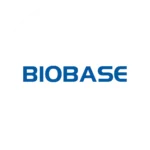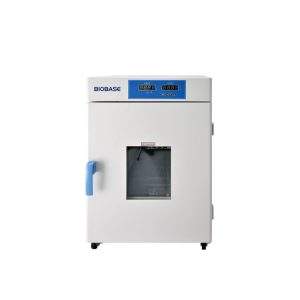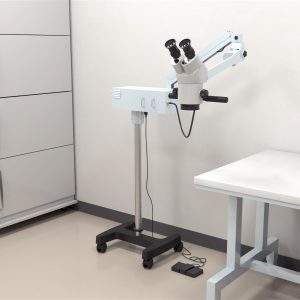$4,077.00 – $5,977.00Price range: $4,077.00 through $5,977.00
The CO2 incubator provides an optimal environment for cell and tissue culture growth. It maintains a constant temperature and humidity with CO2 control.
Conduct science offers a CO2 incubator of three-volume capacities (50L, 80L, and 160L). These incubators are available with either an air jacket or a water jacket heating system, and use a UV lamp for sterilization. A major advantage of this incubator is that the data can be saved in real-time since it is equipped with a USB port and LCD touch screen. Humidity is provided by a water tank for natural evaporation.

Biobase is a global company specializing in laboratory equipment and biotechnology products. Founded in China, Biobase offers a wide range of products, including biosafety cabinets, laboratory refrigerators, centrifuges, and other essential laboratory instruments.



The CO2 incubator provides an optimal environment for cell and tissue culture growth. It maintains a constant temperature and humidity with precise CO2 control. By creating a sealed environment, it significantly reduces the risk of cell contamination from external factors. The CO2 incubator helps maintain a stable 7.4 pH environment and offers a temperature range of +5 ~ 60 ℃, with an ambient temperature range of 18~30℃ and a relative humidity of ≤80%. The CO2 range is adjustable from 0~20%.
Conduct Science offers CO2 incubators in three volume capacities: 50L, 80L, and 160L. These incubators are available with either air jacket or water jacket heating systems, and utilize a UV lamp for sterilization. A key advantage of these models is their ability to save real-time data through a USB port and LCD touch screen interface. The LCD screen displays temperature, CO2 concentration, and run-time for easy monitoring. CO2 concentration is accurately maintained with a high-quality infrared sensor. The incubators are equipped with adjustable shelves featuring holes to ensure uniform temperature distribution throughout the chamber. Humidity is provided by a water tank for natural evaporation.
Parameters* | 50L | 80L | 160L |
|---|---|---|---|
Heating | Air jacket | Air jacket or Water Jacket | Air jacket or Water Jacket |
| Temp. Range | RT +5 ~ 60 ℃ | RT +5 ~ 60 ℃ | RT +5 ~ 60 ℃ |
Control Type | Microcomputer controller | Microcomputer controller | Microcomputer controller |
| Temp. Fluctuation | ≤ ±0.2℃(at 37℃) | ≤ ±0.2℃(at 37℃) | ≤ ±0.2℃(at 37℃) |
| Temp. Uniformity | ≤ ±0.3 ℃(at 37℃) | ≤ ±0.3 ℃(at 37℃) | ≤ ±0.3 ℃(at 37℃) |
| Time Setting | 999h or continuous | 999h or continuous | 999h or continuous |
| Alarm | Audible and visual alarm; Over-temperature alarm; CO2 Concentration alarm. | Audible and visual alarm; Over-temperature alarm; CO2 Concentration alarm. | Audible and visual alarm; Over-temperature alarm; CO2 Concentration alarm. |
| Shelves | 2 pcs/ adjustable | 2 pcs/ adjustable | 2 pcs/ adjustable |
| Material | External cold-rolled steel with painting; internal stainless steel | External cold-rolled steel with painting; internal stainless steel | External cold-rolled steel with painting; internal stainless steel |
| Door | With inner door and external door | With inner door and external door | With inner door and external door |
| CO2 Range | Infrared sensor, range 0~20% | Infrared sensor, range 0~20% | Infrared sensor, range 0~20% |
| CO2 Control Resolution | 0.1 % | 0.1 % | 0.1 % |
Humidification Type | Water tank for natural evaporation | Water tank for natural evaporation | Water tank for natural evaporation |
Sterilization Type | UV lamp | UV lamp | UV lamp |
| Ambient Temp. & Humidity | 18~30℃, suggest 25±2℃; relative humidity ≤80% | 18~30℃, suggest 25±2℃; relative humidity ≤80% | 18~30℃, suggest 25±2℃; relative humidity ≤80% |
| Caster | Foot master caster | Foot master caster | Foot master caster |
Consumption | 350W | 650W/ 875W (Water jacket) | 650W/1000W( Water jacket) |
| Power Supply | AC110/220V±10%, 50/60Hz | AC110/220V±10%, 50/60Hz | AC110/220V±10%, 50/60Hz |
| Internal Size(W*D*H)mm | 337*338*443 | 377*410*524 / 428*412*522 (Water jacket) | 477*473*711 / 528*512*722 (Water jacket) |
| External Size(W*D*H)mm | 500*527*821 | 600*596*921 / 647*593*1070(Water jacket) | 700*666*1101 / 747*694*1260 (Water jacket) |
| Packing Size (W*D*H) mm | 655*685*970 | 735*735*1070 / 725*780*1225 (Water jacket) | 795*835*1250 824*877*1425 (Water jacket) |
| Gross Weight(kg) | 68 | 83 /108 (Water jacket) | 108 /145(Water jacket) |
*Parameters in bold reflect differences among models.
The CO2 incubator comprises a chamber that maintains the desired temperature and humidity. The external part of the incubator is made of cold-rolled steel with painting, while the internal portion is made of stainless steel. It includes an inner door and an external door.
Heating inside the incubator is provided by an air jacket or water jacket models. Sterilization is performed with a UV lamp. The incubator can control the temperature within the range of +5 ~ 60 ℃. It allows a temperature fluctuation of ≤ ±0.2℃ (at 37℃) and has a temperature uniformity of ≤ ±0.3 ℃ (at 37℃). The timing of the incubation period can be set at 999h, or incubation can be performed continuously. The incubator is equipped with several alarms, including an audible and visual alarm, over-temperature alarm, and CO2 concentration alarm. The CO2 range is between 0~20%, which is controlled with an infrared sensor. The CO2 control resolution is 0.1%. The incubator includes a water tank for natural evaporation to provide humidity. It has an ambient temperature of 18~30℃ and relative humidity of ≤80%.
The internal part of the incubator measures 338×392×442 mm while the external measures 575×632×830 mm. It comes in three-volume capacities (50L, 80L, and 160L). Its weight depends on the size of the chamber. The 50L capacity weighs 85 kg, 80L weighs 108 kg, and 160L weighs 147 kg.
The CO2 incubator is used in several applications for various medical and pharmaceutical industries. It is used in tissue engineering, in vitro fertilization, medical research, diagnostics, and developing biosensors.
The CO2 incubator is commonly used to incubate oocytes and sperm. The oocytes and sperm are placed in a petri dish where they fertilize and develop in the incubator for a few days before being transplanted into a uterus. It provides the optimal conditions for the growth of the embryos.
In a study conducted by Iwayama, Ishikawa, Ohsumi, and Fukui (2005), they compared a portable CO2 incubator and a standard CO2 incubator in their effectiveness for in vitro maturation (IVM) of minke whale, bovine, and porcine oocytes. No significant differences were observed in the maturation of the oocytes between the standard and portable CO2 incubators.
Another study conducted by Nabavi, Todehdehghan, and Shiravi (2013) used a CO2 incubator to assess the effect of caffeine on mouse sperm motility, vitality, and fertilization rate in T6 and M16 media. The sperm were added to the oocytes in the media with or without caffeine. They were then incubated in the CO2 incubator for 24 hours. The results from the study revealed that when caffeine was added to the T6 medium, enhanced fertilization, motility, and vitality of the sperm were observed.
CO2 incubators are used to cultivate cell and tissue cultures for tissue-engineered products. These products are used to develop novel treatments for various diseases, including malignant tumors.
In a study conducted by Domansky et al. (2010) they developed a bioreactor that maintains 3D tissue cultures under continuous perfusion. They also integrated several bioreactors into an array using a multiwell plate format. They perfused the multiwell plate inside a humidified 5% CO2 incubator maintained at 37°C.
A CO2 incubator was also used in a study by Tripathi and Basu (2012), who investigated a porous hydroxyapatite scaffold for bone tissue engineering. The CO2 incubator was used to incubate the tissue culture plates.
The CO2 incubator is used for various processes in the diagnostic analysis of pathogens that involve examining cell cultures. The incubators are used in the processes of thawing, transferring the cells, infecting the cell line, and dyeing the cell cultures.
In a study conducted by Zimmerman et al. (2010), they investigated the stability of porcine reproductive and respiratory syndrome virus (PRRSV) at various temperatures. The CO2 incubator was used to incubate the samples in roller bottles comprising minimal essential medium (MEM) and growth medium supplement.
The CO2 incubator maintains an adequate environment for cell growth. Although standard incubators maintain the humidity and temperature inside the chamber, the CO2 incubator also maintains the pH. This makes it more suitable for various applications involving cell or tissue culture, including in-vitro fertilization and tissue engineering. Another advantage of the CO2 incubator is its LCD screen that saves data in real-time. It is also equipped with a built-in sensor that maintains the desired CO2 concentration.
It is important to prevent leaving the incubator door open for too long as this can lead to contamination of the samples. A limitation of using the incubator is that it can only incubate cultures at a specific temperature, humidity, pH, and CO2 concentration. Therefore, multiple cultures requiring different environmental variables need to be incubated separately, which can take a lot of time if only one incubator is available.
| Weight | 180.78 lbs |
|---|---|
| Capacity | 50L, 80L, 160L |
| Heating | Air jacket, Water jacket |
You must be logged in to post a review.
There are no questions yet. Be the first to ask a question about this product.
Reviews
There are no reviews yet.